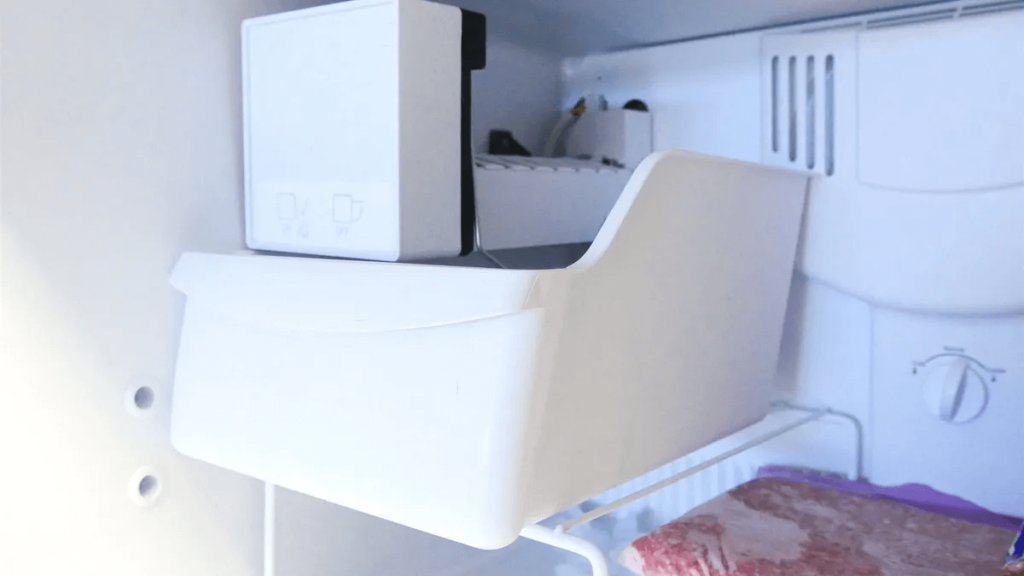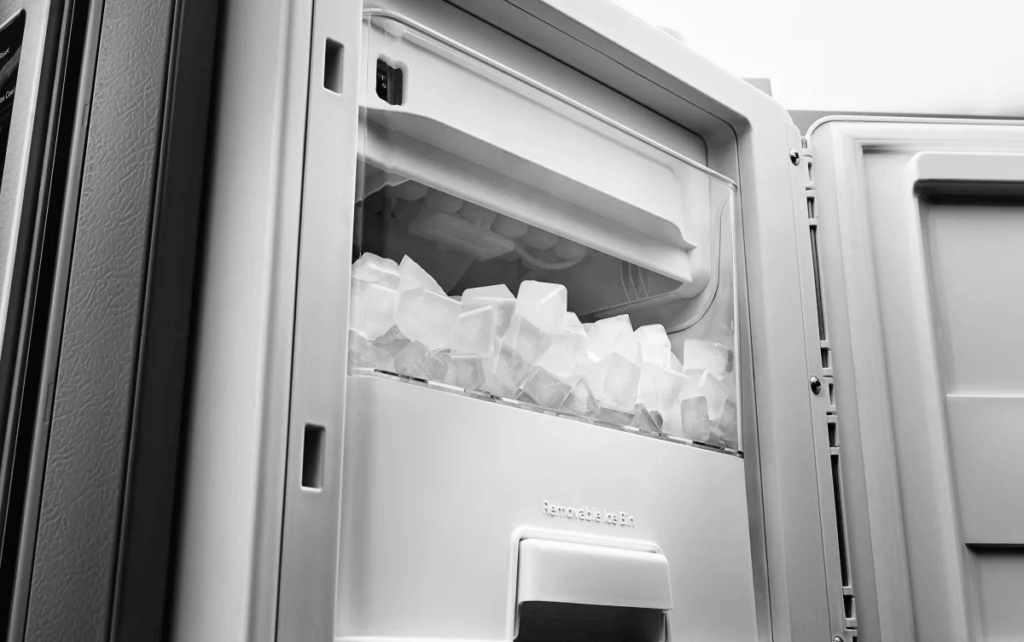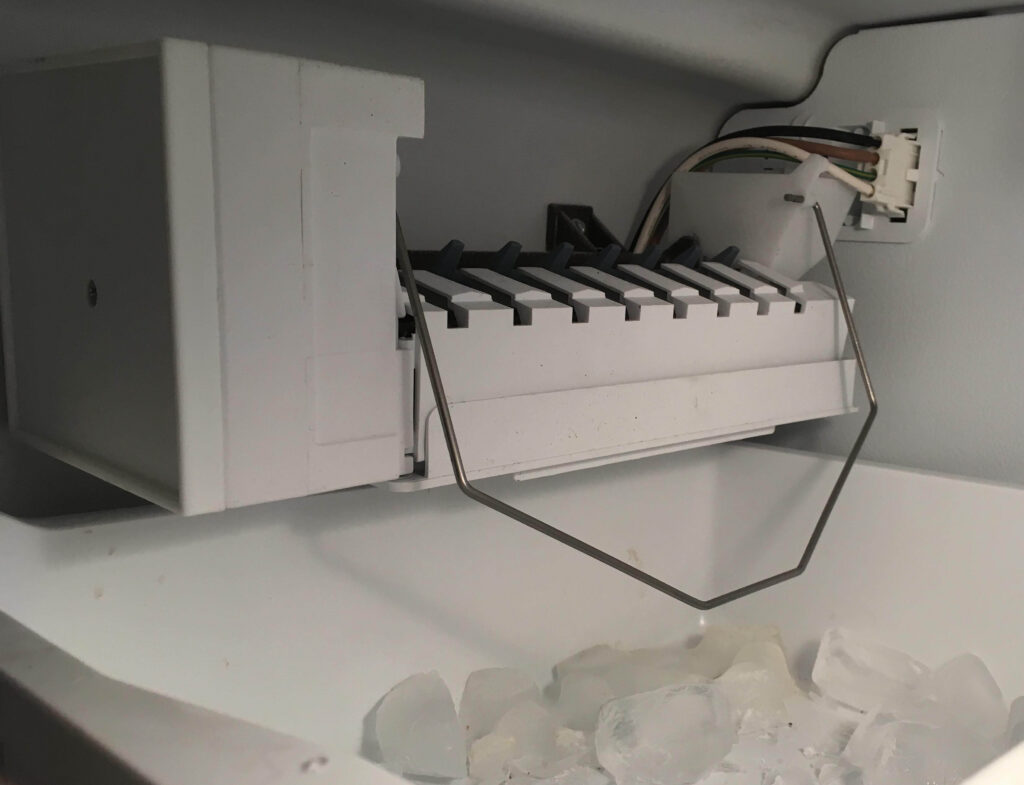
Picture this: It’s a sweltering summer afternoon, and you’re ready to quench your thirst with a glass of ice-cold water. You confidently stroll over to your refrigerator, only to find that the ice maker is on strike. Fear not! We’ve got you covered with an in-depth guide on how to troubleshoot and resolve common refrigerator ice maker problems. In this comprehensive article, we’ll explore various issues that can plague your ice maker and provide step-by-step solutions. So, grab a cold drink (if you can find one), and let’s get started on the quest to fix your ice maker blues!
Problem #1: No Ice at All
Question: What do you do when your ice maker seems to have forgotten its main job – making ice?
The lack of ice in your life can be a real downer. But before you reach for that bag of store-bought ice, consider the following steps.
Check the Water Supply
First things first, make sure your refrigerator is properly connected to a water source. Without a water supply, your ice maker won’t be able to work its magic. Here’s what to do:
- Inspect the water line: Ensure the water line is securely connected to your fridge. Any loose or damaged connections could be the root cause of your ice woes.
- Turn on the water supply valve: There’s usually a water supply valve that controls the flow of water to your fridge. Make sure it’s turned on, allowing water to reach the ice maker.
Water Filter Woes
If your refrigerator is equipped with a water filter, it may be clogged or overdue for a replacement. An old or dirty filter can affect water flow and, consequently, ice production. Take these steps:
Replace the water filter: Check your owner’s manual for instructions on changing the water filter. Regular replacements are crucial for maintaining good water quality.
Water Pressure Matters
Insufficient water pressure can also hamper the ice-making process. Here’s what you can do to ensure your water pressure is up to par:
Check the water pressure: Measure the water pressure in your home. Ideally, it should be between 40 and 60 pounds per square inch (psi). If it’s too low, consider installing a water pressure booster.
Problem #2: Small or Misshapen Ice Cubes
Question: Why does your ice look like it’s auditioning for a role in an avant-garde art exhibit?
When your ice cubes resemble abstract sculptures, it’s time to investigate. The following factors could be contributing to the misshapen ice dilemma.
Water Pressure Redux
As we mentioned earlier, water pressure plays a significant role in ice production. If your ice cubes are coming out small or oddly shaped, inadequate water pressure might be the culprit. What to do:
Adjust the water pressure: If your home’s water pressure is too high or too low, it can affect ice cube formation. Consider installing a pressure regulator to maintain the ideal pressure.
The Ice Mold Thermostat
The ice mold thermostat is a critical component that determines when to release ice cubes into the bin. If it’s malfunctioning, it can lead to oddly shaped cubes. Here’s how to handle this:
Replace the ice mold thermostat: If you suspect that the thermostat is the issue, it’s best to replace it. Consult your refrigerator’s manual for specific replacement instructions.
Problem #3: Ice with a Foul Taste or Odor
Question: Why does your ice taste like it needs a breath mint?
Funky-tasting ice is a real turn-off. It could be a result of impurities in the water supply or a dirty ice maker. Let’s dive into the solutions.
Water Quality Woes
If your tap water has an unpleasant taste, your ice will suffer the same fate. Ensuring good water quality is essential. Here’s what to do:
Use a water filter: If your tap water isn’t pristine, consider using a water filter that connects to your refrigerator. This can significantly improve the taste and quality of your ice.
Clean the Ice Maker
Regular cleaning of your ice maker and the ice bin can prevent the buildup of odors and contaminants. Here’s how to do it:
- Unplug the refrigerator: Always start by unplugging your refrigerator to ensure safety during the cleaning process.
- Empty the ice bin: Remove all the ice from the bin and discard any ice that looks discolored or smells off.
- Mix a cleaning solution: Create a solution of equal parts water and white vinegar. This natural mixture is excellent for removing scale and odors.
- Clean the ice bin: Using a sponge or cloth soaked in the vinegar solution, wipe down the interior of the ice bin thoroughly.
- Clean the ice maker: Gently clean the ice maker’s interior components, such as the ice mold and the ice mold thermostat. Be careful not to damage any parts.
- Rinse and dry: After cleaning, rinse all parts with clean water and dry them thoroughly to prevent any lingering odors.
Problem #4: Leaking Water

Question: Why does your ice maker seem to be staging its own version of Waterworld?
A leaky ice maker can cause not only frustration but also potential damage to your kitchen. Here’s how to address this watery issue.
Check the Water Line
- Inspect the water line: Carefully examine the water line leading to your refrigerator. Look for any visible damage or loose connections. Tighten or replace as needed.
- Inlet Valve Inspection: If the inlet valve is stuck open, it can lead to water leakage. Here’s what to do:
- Check the inlet valve: The inlet valve is responsible for regulating the flow of water into the ice maker. If it’s malfunctioning, replace it with a compatible valve for your specific refrigerator model.
- Examine the Ice Mold: A crack or defect in the ice mold can allow water to escape. Inspect the ice mold and consider replacing it if you discover any damage.
Problem #5: Ice Maker Won’t Stop Making Ice
Question: Why does your ice maker seem to think it’s participating in a never-ending ice-making competition?
An ice maker that produces ice non-stop can quickly fill up your freezer, creating a frosty disaster. Here’s how to bring this ice-making marathon to a halt.
The Shutoff Arm Solution
- Check the shutoff arm: The shutoff arm is a small, pivoting mechanism that senses the level of ice in the bin. If it’s stuck or improperly positioned, it can cause the ice maker to overproduce. Here’s what to do:
- Gently lift the shutoff arm: Carefully lift the shutoff arm to the upright (off) position. This should stop the ice maker from producing more ice.
- Adjust the Temperature: Ensure your freezer is set to the correct temperature. If it’s too cold, the ice maker may not shut off as it should. The ideal temperature for most freezers is around 0 degrees Fahrenheit (-18 degrees Celsius).
Problem #6: Ice Maker is Noisy
Question: Why does your ice maker sound like it’s practicing for a drum solo?
A noisy ice maker can be quite the nuisance. Those clunks and clatters can disrupt your peace and quiet. Here’s how to identify and silence the racket:
- Empty the ice bin: Sometimes, ice cubes can become lodged in the bin, causing a commotion. Empty the bin and see if the noise dissipates.
- Examine the inlet valve: The inlet valve is a critical component of the ice-making process. If it’s making excessive noise, it might be time to replace it.
- Check the level of your refrigerator: An unlevel fridge can create a host of issues, including unusual noises. Use a level to ensure your refrigerator is sitting evenly on the floor. Adjust the leveling feet if necessary.
Problem #7: Ice Maker Won’t Dispense Ice

Question: Why does your ice maker refuse to let your ice cubes see the light of day?
If your ice maker is being unusually stubborn about dispensing ice, it’s time to explore the following potential solutions:
- Check the ice dispenser chute: Sometimes, a rogue ice cube or foreign object can block the ice dispenser chute, preventing ice from flowing through. Clear any obstructions and test the dispenser.
- Inspect the auger motor: The auger motor is responsible for driving the mechanism that dispenses ice. If it’s malfunctioning, it won’t be able to deliver ice to your glass. Test the motor and replace it if necessary.
- Examine the switches and controls: The switches and controls that trigger ice dispensing can wear out or become faulty over time. If you suspect this is the issue, consult your refrigerator’s manual for replacement instructions.
Wrapping It Up
And there you have it – a comprehensive guide to troubleshooting and fixing common refrigerator ice maker problems. We’ve covered a wide array of issues, from the frustrating absence of ice to the persistent noise-making habits of your ice maker. Armed with this knowledge, you can confidently tackle these problems head-on.
Remember, always approach these fixes with safety in mind, and if you’re not comfortable doing them yourself, don’t hesitate to call in a professional. Your ice maker will thank you for the TLC, and you can get back to enjoying those frosty, refreshing beverages without a hitch. So, keep your cool, and let’s get that ice maker back in tip-top shape!
Frequently Asked Questions (FAQ) – Refrigerator Ice Maker Problems
We understand that dealing with refrigerator ice maker problems can be a bit tricky, so we’ve compiled this list of frequently asked questions to help you navigate the troubleshooting process. If you have a question that’s not covered here, don’t hesitate to reach out for further assistance.
1. Why is my ice maker not producing any ice?
Answer: The lack of ice production can be caused by several factors. First, ensure that your refrigerator is properly connected to a water source and that the water supply valve is open. If these are in order, consider checking the water filter, water pressure, and the ice mold thermostat. Any of these components could be affecting ice production.
2. What should I do if my ice cubes are coming out small or misshapen?
Answer: Misshapen ice cubes are often linked to water-related issues. Begin by checking and adjusting your home’s water pressure. If the problem persists, inspect the ice mold thermostat, as it may be malfunctioning.
3. How can I get rid of the strange taste and odor in my ice?
Answer: A foul taste or odor in your ice can result from impurities in the water or a dirty ice maker. You can address this issue by using a water filter to improve water quality and regularly cleaning the ice maker and the ice bin with a mixture of water and white vinegar.
4. My ice maker is leaking water; what should I do?
Answer: A leaking ice maker could be due to a damaged water line, a malfunctioning inlet valve, or a cracked ice mold. Inspect the water line for any visible damage, check the inlet valve for proper functioning, and assess the condition of the ice mold to identify the source of the leak.
5. How do I stop my ice maker from producing excessive ice?
Answer: If your ice maker seems to be on overdrive, you can take a few steps to resolve the issue. Check the shutoff arm and make sure it’s not stuck in the down position. If it’s correctly positioned, adjust your freezer’s temperature to the recommended setting to prevent overproduction.
6. Why is my ice maker making unusual noises?
Answer: Unusual noises coming from your ice maker can be caused by ice blockages in the ice bin, a noisy inlet valve, or an unlevel refrigerator. Start by emptying the ice bin to ensure there are no obstructions. If the noise persists, consider replacing the inlet valve or leveling your fridge to reduce noise.
7. My ice maker won’t dispense ice; how can I fix this?
Answer: If your ice maker is refusing to dispense ice, there may be a blockage in the ice dispenser chute, a malfunctioning auger motor, or faulty switches and controls. Check the chute for obstructions, test the auger motor, and inspect the switches and controls. Depending on the issue, you may need to clear blockages or replace the necessary components.